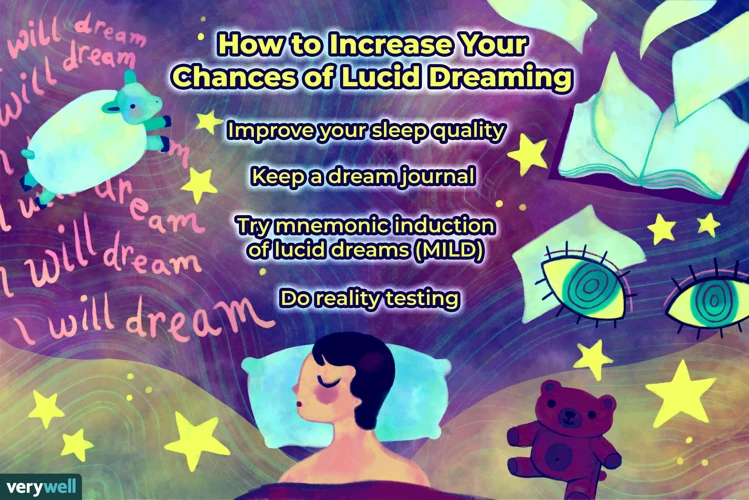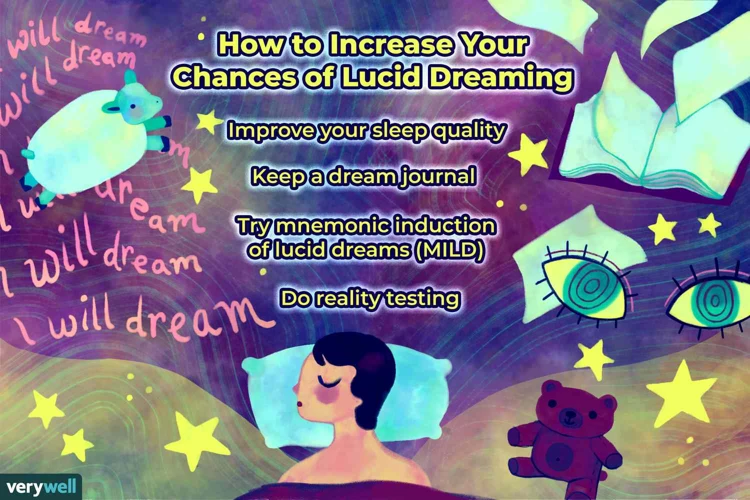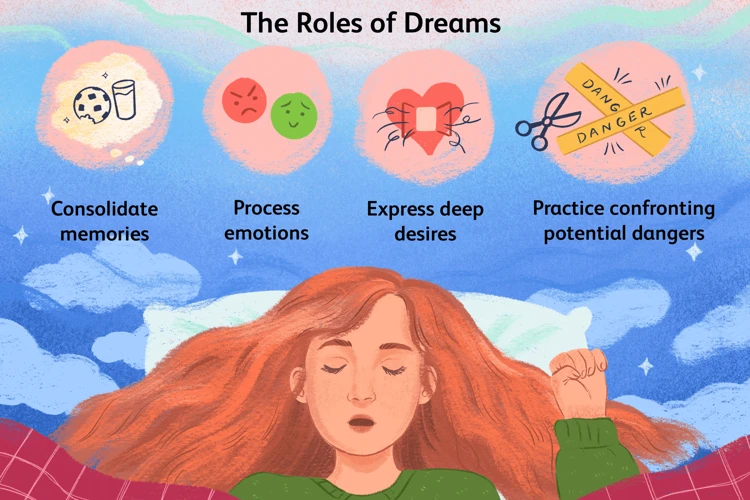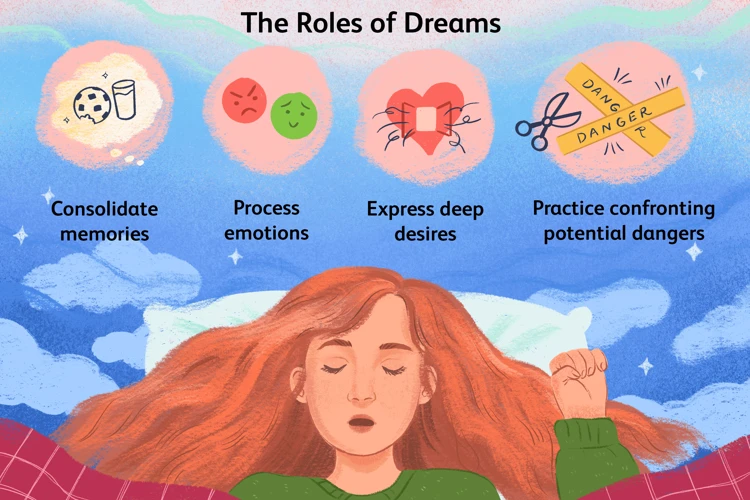Navigating the mysterious realm of dreams can be an exhilarating and sometimes unsettling experience. Nightmares, in particular, can leave us feeling fearful, anxious, and drained. But what if there was a powerful tool that could help us overcome these night terrors and take control of our dreams? Enter lucid dreaming, a phenomenon that allows us to become aware within our dreams and actively shape their outcome. In this article, we will delve into the concept of lucid dreaming, explore its benefits, and discover how it can be used as a transformative method to conquer nightmares. So fasten your seatbelts and get ready for a mind-bending journey into the realm of dream mastery.
Understanding Nightmares

Nightmares are vivid and distressing dreams that can leave us feeling overwhelmed and unsettled. These intense dreams often involve elements of fear, danger, or despair. Causes of nightmares can vary, ranging from psychological factors such as stress, anxiety, or trauma, to physical factors like sleep deprivation or certain medications. Understanding the definition of nightmares helps us acknowledge that they are a natural part of the dreaming process, serving as a way for our unconscious mind to process emotions and experiences. Nightmares can also carry symbolic messages or reflect underlying fears and anxieties. Exploring the common nightmares symbolism messages can provide valuable insight into our subconscious thoughts and emotions. Additionally, it is important to note that nightmares can affect individuals of all ages, including children, and knowing the causes of nightmares in children can help parents and guardians provide support and guidance. In the following sections, we will delve deeper into the concept of nightmares and explore how lucid dreaming can be a powerful tool to overcome them.
Definition of Nightmares
Nightmares can be defined as extremely vivid and distressing dreams that evoke intense feelings of fear, terror, or discomfort during sleep. These dreams often involve threatening situations, danger, or a sense of powerlessness. They can leave a lasting impact on the dreamer, causing heightened levels of anxiety and a feeling of unease upon waking. Nightmares are a natural part of the dreaming process and are usually a result of the mind processing emotions, experiences, and anxieties. Sometimes, nightmares are associated with specific traumatic events or experiences, and they can serve as a way for the subconscious mind to work through and process these emotions. It’s important to understand that although nightmares can be unpleasant, they can also offer valuable insights into our emotions and fears. By analyzing the symbolism and messages within nightmares, we can gain a deeper understanding of our subconscious thoughts and anxieties. In some cases, seeking professional guidance, such as dream analysis, can assist in working through the underlying causes of nightmares and provide healing and resolution. The next section will explore the causes of nightmares in more detail, shedding light on the various factors that contribute to their occurrence.
Causes of Nightmares
Nightmares can have various causes that contribute to their occurrence. Understanding these causes can provide insight into why we experience distressing dreams. Here are some key factors that can contribute to nightmares:
1. Stress and Anxiety: High levels of stress and anxiety can disrupt the sleep cycle and increase the likelihood of experiencing nightmares. When we are under stress, our minds may continue to process these emotions during sleep, leading to intense and unsettling dreams.
2. Trauma: Traumatic experiences, such as accidents, abuse, or witnessing a distressing event, can manifest in the form of nightmares. These dreams may serve as a way for the mind to process and cope with the trauma, allowing the individual to slowly heal and recover. (internal link: role of trauma in nightmares and healing through dream analysis)
3. Medications: Certain medications, such as antidepressants, blood pressure medications, and sleep aids, have been linked to nightmares as a potential side effect. It is important to discuss any recurring nightmares with a healthcare professional to determine if medication adjustments are necessary.
4. Sleep Deprivation: Lack of sufficient sleep or disruptions in sleep patterns can increase the likelihood of nightmares. When our sleep cycles are disturbed, it can affect the overall quality of our dreams, potentially leading to more vivid and unsettling experiences.
5. Substance Abuse: The use of substances like alcohol, drugs, or even certain foods before bed can influence brain activity during sleep, potentially resulting in nightmares.
6. Underlying Mental Health Conditions: Conditions such as anxiety disorders, depression, and post-traumatic stress disorder (PTSD) can contribute to the occurrence of nightmares. Addressing and managing these underlying mental health issues can help reduce the frequency and intensity of nightmares.
Recognizing the potential causes of nightmares allows us to take steps towards managing and overcoming them. By exploring the common symbolism and messages in nightmares, we can gain a deeper understanding of our subconscious thoughts and emotions, further aiding us in finding effective ways to address and conquer these unsettling dreams.
The Concept of Lucid Dreaming

Lucid dreaming is a fascinating phenomenon that allows individuals to become aware within their dreams and actively participate in the dream narrative. In simple terms, definition of lucid dreaming refers to the state of being conscious that one is dreaming while the dream is occurring. This heightened state of awareness enables individuals to have a sense of control over their dream experiences. The concept of lucid dreaming can be understood through several key aspects. Firstly, it involves recognizing the dream state itself, distinguishing it from waking reality. Secondly, it encompasses the ability to maintain this awareness throughout the dream, without waking up. This awareness grants lucid dreamers the freedom to influence the dream’s direction, alter its settings, or even interact with other dream characters. Techniques such as reality checks and maintaining a dream journal play a crucial role in developing the skill of lucid dreaming. By cultivating this unique ability, individuals can unlock a world of limitless possibilities within their own minds.
Definition of Lucid Dreaming
Definition of Lucid Dreaming:
– Lucid dreaming is a state of consciousness in which an individual becomes aware that they are dreaming while in the midst of a dream. This awareness grants the dreamer the ability to recognize the dream as a construct of their own mind, offering a unique sense of clarity and control.
– In a lucid dream, individuals can intentionally manipulate the dream environment, interact with dream characters, and even alter the narrative of the dream itself.
– Lucid dreaming is characterized by a heightened sense of self-awareness within the dream state, allowing individuals to explore and experience their imagination in a more vivid and immersive manner.
– It is important to note that experiencing a lucid dream does not necessarily mean having complete control over every aspect of the dream. The level of lucidity can vary from a slight awareness to a fully conscious and deliberate engagement within the dream.
– Lucid dreaming is a fascinating phenomenon that has intrigued researchers and psychologists for decades, offering insights into the nature of consciousness, the mind’s capacity for imagination, and the boundaries of reality within the dream world.
How Lucid Dreaming Works
Lucid dreaming is a fascinating phenomenon that allows individuals to be aware that they are dreaming while still in the midst of a dream. So, how does lucid dreaming work? The process begins with the recognition that you are dreaming, which can be triggered by various cues such as unusual occurrences, illogical events, or even performing a reality check during the waking hours. Once aware, the dreamer experiences a heightened state of consciousness within the dream, where they can actively engage and interact with the dream environment. During lucid dreams, the dreamer has the ability to control aspects of the dream, such as the narrative, characters, settings, and even their own actions. This heightened level of control is facilitated by the prefrontal cortex, the area of the brain associated with decision-making, self-awareness, and executive functions. In a lucid dream, this region becomes more activated, allowing for greater cognitive abilities and rational thinking within the dream state. With practice, individuals can learn to enter and maintain lucidity in their dreams, transforming them into immersive and empowering experiences. Lucid dreaming, therefore, unlocks the potential for incredible self-discovery, creativity, and personal growth within the realm of dreams.
Benefits of Lucid Dreaming

Lucid dreaming offers a multitude of benefits that can significantly impact our waking lives. One of the most notable advantages is the enhanced control and empowerment it provides. When we become aware within a dream, we gain the ability to influence and manipulate the dream world, allowing us to confront fears, practice new skills, and engage in thrilling adventures. Lucid dreaming offers a unique opportunity for overcoming fear and anxiety. By consciously facing and working through our nightmares, we can gradually desensitize ourselves to the underlying emotions and learn to confront our fears with confidence. Additionally, lucid dreaming facilitates both problem solving and creative exploration. We can use our lucid dreams to gain insights, find solutions to real-life challenges, and explore our subconscious mind for inspiration and self-discovery. These advantages make lucid dreaming a powerful tool for personal growth and transformation.
Enhanced Control and Empowerment
Enhanced control and empowerment are two key benefits of lucid dreaming. When we become aware within a dream, we gain the ability to manipulate and shape the dream world according to our desires. This newfound control allows us to overcome the fear and helplessness often associated with nightmares. We can consciously alter the dream narrative, change the environment, or even summon protective figures or objects to assist us. This sense of control and agency not only empowers us within the dream itself but can also have a lasting impact on our waking life. As we practice lucid dreaming and exercise control over our dreams, we develop a sense of self-efficacy and confidence that spills over into our daily lives. We become more adept at navigating challenging situations and facing our fears, knowing that we have the power to confront and overcome them. The enhanced control and empowerment experienced in lucid dreaming can be truly transformative, providing us with a valuable tool to conquer nightmares and take charge of our subconscious mind.
Overcoming Fear and Anxiety
Overcoming fear and anxiety is one of the most significant benefits of lucid dreaming. When we become aware within a nightmare, we have the incredible opportunity to face our fears head-on and transform them into something more manageable. Lucid dreaming empowers us to confront the terrifying elements of our dreams with a sense of control and confidence. We can choose to stand up to our fears, challenge their validity, and reframe the narrative. By actively engaging with our nightmares, we diminish their power over us in both the dream world and waking life. Lucid dreaming also allows us to practice new coping strategies and explore different outcomes, creating a sense of mastery over our fears. Additionally, the process of confronting fear and anxiety in lucid dreams can have a carryover effect to our daily lives, allowing us to approach real-life challenges with increased resilience and a reduced sense of fear. So, if you find yourself plagued by recurring nightmares or overwhelmed by anxiety, lucid dreaming can be a powerful tool to help you overcome these emotional hurdles and embark on a journey of self-discovery and empowerment.
Problem Solving and Creative Exploration
Lucid dreaming opens up a world of possibilities for problem solving and creative exploration. When we become aware within a dream, we can actively engage with the dream environment and manipulate the narrative to our advantage. Through this process, we can tackle real-life issues or tap into our creativity in ways that might not be possible in the waking world. One technique for problem solving in lucid dreams is called dream incubation. This involves setting a specific intention or question before falling asleep, with the hope that the dream will provide insights or solutions. Lucid dreaming also allows for creative exploration. We can experiment with different scenarios, test our ideas, and even practice skills or techniques. The dream world becomes an expansive playground where we can let our imaginations run wild, free from the constraints of reality. Whether it’s finding innovative solutions to complex problems or unlocking our creative potential, lucid dreaming offers a unique platform for problem solving and creative expression.
Using Lucid Dreaming to Overcome Nightmares

Using the incredible power of lucid dreaming, we can turn the tables on nightmares and reclaim control over our dream experiences. The first step is becoming aware within the dream, which allows us to recognize that we are in a dream state. Through various techniques, such as reality checks and mindfulness practices, we can train ourselves to question reality within our dreams and trigger lucidity. Once we have achieved lucidity, we can employ a range of strategies to confront and transform nightmares. By actively engaging with the elements of our dreamscape and summoning courage, we can choose to face and overcome our fears head-on. This might involve visualization, assertiveness, or even transforming threatening figures into more benign forms. The transformational potential of using lucid dreaming to conquer nightmares is truly remarkable, as it empowers us to rewrite the narrative of our dreams and free ourselves from the grip of recurring night terrors.
Becoming Aware within the Dream
Becoming aware within the dream is the fundamental principle of lucid dreaming. It involves developing the ability to recognize that you are dreaming while still immersed in the dream itself. This awareness allows you to break free from the limitations of the dream narrative and take control of your actions and surroundings. Achieving lucidity within a dream can be a groundbreaking experience, as it opens up a world of endless possibilities and empowers you to actively shape and direct the dream’s outcome. There are various ways to become aware within a dream, and one effective technique is to establish a habit of performing reality checks throughout the day. These reality checks can involve simple actions such as looking at your hands, checking a clock, or asking yourself if you are dreaming. By consistently practicing these reality checks during waking hours, they will become ingrained in your subconscious mind and eventually carry over into your dreams. Another method to induce lucidity is through the use of mnemonic induction of lucid dreams (MILD) technique. This technique involves setting clear intentions before sleep, repeating affirmations like “I will be aware that I’m dreaming” or visualizing yourself becoming lucid in a dream. By training your mind to actively seek lucidity, you increase the likelihood of becoming aware within the dream state. It’s important to note that achieving lucidity within dreams may take time and practice, as it requires enhancing your self-awareness and developing a keen sense of observation. However, with persistence and dedication, you can unlock the power of lucid dreaming and harness it as a tool for overcoming nightmares and exploring the vast landscape of your subconscious mind.
Techniques to Induce Lucidity
There are various techniques that can be employed to increase the likelihood of experiencing lucid dreams. These techniques aim to enhance self-awareness within the dream state, allowing the dreamer to recognize that they are in a dream and exert control over it. Here are some effective methods for inducing lucidity:
- Mnemonic Induction of Lucid Dreams (MILD): This technique involves setting an intention to become lucid while falling asleep. Before going to bed, repeat a mantra like “Tonight, I will have a lucid dream” or visualize yourself becoming aware within a dream. The idea is to reinforce the intention and create a mental association between conscious awareness and dreaming.
- Reality Checks: Reality checks are simple reality-based tests that you perform throughout the day to check if you are in a dream or reality. These tests can involve trying to push your finger through your palm, looking at a clock or text and then looking away and back again to see if it changes, or jumping to see if gravity behaves normally. By regularly performing reality checks, you will develop a habit of questioning reality in your dreams, which can lead to lucidity.
- Wake-Back-to-Bed (WBTB): This technique involves waking up after a few hours of sleep and staying awake for a short period before going back to sleep. During this awake period, engage in activities that promote wakefulness and consciousness, such as reading about lucid dreaming or writing in a dream journal. WBTB increases the chance of entering a dream directly from the waking state and therefore enhances the potential for lucidity.
- Reality Testing: Throughout the day, regularly question your surroundings and mental state to determine if you are dreaming or awake. Look for inconsistencies, illogical elements, or bizarre occurrences that might indicate a dream. By developing a habit of reality testing, you will increase your chances of carrying out the same behavior while dreaming.
- Lucid Dreaming Supplements: Some individuals find that certain supplements or herbs can enhance their dream experiences and promote lucidity. Examples include galantamine, choline, or vitamin B6. However, it is essential to research and consult with a healthcare professional before incorporating any supplements into your routine.
Remember that the effectiveness of these techniques can vary among individuals, and it may take time and practice to develop proficiency in inducing lucidity. Patience, consistency, and a positive mindset are key to successfully utilizing these methods. Experiment with different techniques, combine them to suit your preferences, and adapt them based on your own experiences to find what works best for you.
Confronting Nightmares and Transforming Them
Confronting nightmares and transforming them is a crucial step in utilizing lucid dreaming as a powerful tool for overcoming night terrors. Once you have become aware within the dream, you can actively take charge of the dream narrative and face the source of your fears with courage. This process requires emotional resilience and a willingness to explore the depths of your subconscious mind. By engaging with the nightmare and confronting its manifestations, you can begin to unravel its underlying symbolism and messages. It is important to remember that nightmares often serve as symbolic representations of our fears and anxieties in waking life. Through lucid dreaming, you have the opportunity to delve into these fears head-on and transform them into more positive or empowering experiences. This transformation can involve changing the course of the dream, altering the environment, or even interacting with the dream characters in a way that empowers and resolves the conflict. The key is to approach the nightmare with curiosity, compassion, and a determination to unravel its deeper meaning. With practice and perseverance, lucid dreaming can help you not only overcome nightmares but also gain valuable insights and personal growth along the way. So don’t shy away from the dark corners of your dreams; embrace them and let the power of lucidity guide you towards transformation and liberation.
Practical Tips for Lucid Dreaming

When it comes to harnessing the power of lucid dreaming, there are a variety of practical tips and techniques that can help you on your journey. One of the most effective methods is keeping a dream journal, where you write down your dreams upon waking up. This practice helps to strengthen your dream recall and increases your awareness of dream patterns and themes. Another useful tip is to incorporate reality checks throughout the day, which involve questioning your reality and verifying whether you are dreaming or awake. This habit can carry over into your dreams, helping you recognize when you are in a dream state. Additionally, there are specific lucidity-inducing techniques that you can try, such as performing meditation or visualization exercises before bed, setting intentions to become lucid in your dreams, or using certain herbs or supplements known for enhancing dream experiences. Experimenting with these strategies and finding what works best for you can greatly increase your chances of having lucid dreams and gaining control over your dream world.
Keeping a Dream Journal
Keeping a Dream Journal is an essential practice for anyone interested in exploring and harnessing the power of their dreams. Keeping a dream journal involves recording your dreams as soon as you wake up, capturing as many details as possible. This process helps to improve dream recall and build a stronger connection to the dream world. When you wake up, take a moment to reflect on your dreams and jot down any vivid images, emotions, or conversations you can remember. Be sure to include specific details like locations, people, and any notable events or symbols. The act of writing down your dreams not only helps to preserve them in your memory but also allows you to analyze and interpret them later on. As you continue to keep a dream journal, patterns may emerge, and recurring themes or symbols may become apparent, providing valuable insight into your subconscious mind. To make the most of your dream journal, keep it by your bedside along with a pen or pencil to ensure easy access when you wake up. Over time, keeping a dream journal can lead to a better understanding of your dreams and facilitate the process of achieving lucidity during your dream experiences.
Reality Checks throughout the Day
Reality checks throughout the day are a key practice for increasing the likelihood of having lucid dreams. These checks involve consciously questioning and verifying whether you are in a dream or awake state. By regularly performing reality checks, you train your brain to question the nature of your reality, making it more likely that this habit will carry over into your dream state. But what exactly are these reality checks, and how can they be incorporated into your daily routine?
One effective reality check is the nose pinch method. Throughout the day, pause and pinch your nose shut while trying to breathe through it. If you can still breathe normally, without feeling any obstruction, it suggests that you are in a dream. This test exploits a common dream element where breathing is possible even if you are holding your nose closed.
Another popular reality check is the hand reality check. Take a moment to observe your hands closely throughout the day. Notice the lines, the texture, and the number of fingers. In dreams, hand appearances can often be distorted or inconsistent. By regularly examining your hands and checking for any abnormalities, you are training your mind to do the same in your dreams. If you notice any unusual hand features in a dream, it can serve as a trigger to become lucid and take control of the dream.
In addition to these methods, there are various other reality checks you can incorporate into your daily routine. For example, looking at digital clocks or written text and then looking away, and looking back to see if the numbers or words have changed. In dreams, these visual elements often change or become distorted, providing a clue that you are dreaming. You can also try testing the physics of your environment by attempting to push your finger through a solid object or jumping to see if you can float or fly. In dreams, physical laws tend to be more flexible and these actions may result in unexpected outcomes.
To make reality checks more effective, it’s important to perform them with a sense of mindfulness. Instead of simply going through the motions, take a moment to really question your reality and be fully present in the moment. This will enhance your chances of recognizing dream signs and triggers when you encounter them, leading to increased lucidity during your dream experiences.
Remember, consistency is key when it comes to reality checks. Try to incorporate them into your daily routine by setting reminders or associating them with specific activities or events. Over time, these reality checks will become second nature, increasing the likelihood of having lucid dreams and empowering you to overcome nightmares.
Lucidity-Inducing Techniques
Lucidity-inducing techniques are valuable tools that can help individuals enhance their ability to experience lucid dreaming. These techniques aim to increase self-awareness and promote the recognition of dreaming while within the dream state. One popular technique is reality checks, where individuals regularly question their reality throughout the day by performing simple tasks or observations. This habit carries over into dreams, leading to moments of realization that one is dreaming. Examples of reality checks include looking at a clock or text and then looking away and back again to see if it changes, attempting to push a finger through the palm of the other hand, or trying to levitate briefly. Another technique is to use mnemonics or affirmations, such as repeating the phrase “I will become lucid in my dreams” before falling asleep. This repetition can help program the subconscious to recognize the dream state and prompt lucidity. Another commonly practiced technique is reality testing, which involves examining the surroundings, engaging the senses, and questioning whether the current experience aligns with the dream world. By consistently incorporating these lucidity-inducing techniques into one’s daily routine, individuals can increase their chances of having lucid dreams and harness the power of dream control and transformation.
Scientific Perspectives on Lucid Dreaming

Scientific research has shed light on the fascinating phenomenon of lucid dreaming, providing insights into its psychological and neurological aspects. Studies have shown that lucid dreaming is a distinct state of consciousness where individuals become aware that they are dreaming while still in the dream itself. This heightened self-awareness during dreams has been linked to increased activity in the prefrontal cortex, the part of the brain responsible for decision-making and self-reflection. Research findings have also revealed that lucid dreaming can have practical benefits beyond dream control, such as improving problem-solving abilities and enhancing creativity. Neuroimaging studies have demonstrated similarities between the brain activity during lucid dreams and wakefulness, indicating that lucid dreaming is a unique hybrid state of consciousness. These scientific perspectives on lucid dreaming not only validate its existence but also provide a platform for further exploration into its potential applications and implications.
Research findings
Research findings have shed light on the fascinating aspects of lucid dreaming and its potential benefits. Here are some key insights from scientific studies:
1. Brain Activity: Electroencephalogram (EEG) recordings have revealed distinct patterns of brain activity during lucid dreaming. The frontal areas of the brain, responsible for self-awareness and decision-making, show increased activity. This suggests that lucid dreaming involves a unique state of consciousness.
2. Physical Responses: Research has documented the ability to consciously control certain physical responses within lucid dreams. This includes regulating heart rate, muscle movements, and even engaging in virtual physical activities. Such findings indicate the mind-body connection in the dream state.
3. Therapeutic Potential: Studies have explored the therapeutic potential of lucid dreaming. For example, individuals suffering from post-traumatic stress disorder (PTSD) have reported using lucid dreaming as a tool for emotional healing and trauma resolution. Lucid dreaming also shows promise in the treatment of nightmares and recurring dreams.
4. Creative Exploration: Research suggests that lucid dreaming can enhance creative problem-solving abilities. The dream state provides a platform for imaginative exploration and the generation of novel ideas. Artists, writers, and inventors have utilized lucid dreaming to tap into their creative potential.
5. Lucidity Training: Research has demonstrated that individuals can learn and develop the skill of lucid dreaming through various training techniques. This includes reality testing, setting dream cues, and engaging in regular practices like meditation and journaling. Lucidity training can significantly increase the frequency and intensity of lucid dreams.
These research findings validate the phenomenon of lucid dreaming and highlight its potential as a powerful tool for self-exploration, therapeutic healing, and creative expression. By understanding the science behind lucid dreaming, we can further harness its benefits and utilize it as a means to overcome nightmares and unlock the full potential of our dream experiences.
Psychological and Neurological Aspects
When it comes to understanding the psychological and neurological aspects of lucid dreaming, researchers have made significant strides in unraveling the mysteries behind this fascinating phenomenon. Psychological studies have shown that lucid dreaming is associated with increased self-awareness, self-control, and emotional regulation. It allows individuals to explore and confront their fears and anxieties in a safe dream environment, leading to potential therapeutic benefits. Lucid dreaming has also been linked to improved memory formation and consolidation, as well as enhanced problem-solving abilities.
On a neurological level, studies have utilized various techniques such as electroencephalography (EEG) and functional magnetic resonance imaging (fMRI) to investigate the brain activity during lucid dreaming. Researchers have discovered that lucid dreaming involves a unique interplay of brain regions associated with self-consciousness, cognitive control, and sensory processing. The prefrontal cortex, often referred to as the “executive center” of the brain, plays a crucial role in maintaining self-awareness and volitional control during lucid dreaming.
Neurochemical studies have revealed that certain neurotransmitters, such as acetylcholine, play a significant role in the induction and maintenance of lucid dreams. By understanding the psychological and neurological aspects of lucid dreaming, scientists are not only unraveling the mechanisms behind this phenomenon but also exploring its potential applications in fields such as therapy, education, and personal growth. With ongoing research and advancements in technology, our understanding of lucid dreaming and its impact on the brain continues to expand, opening up new avenues for exploration and harnessing its power for various purposes.
Precautions and Considerations
When it comes to exploring the world of lucid dreaming, it is important to approach it with caution and consider certain precautions and considerations. While lucid dreaming can be a transformative and empowering practice, it is not suitable for everyone, especially those with certain mental health conditions such as psychosis or severe anxiety. It is advisable to seek professional guidance before embarking on a lucid dreaming journey, particularly if you have a history of mental health issues. It is also essential to prioritize sleep hygiene and ensure that lucid dreaming does not disrupt your regular sleep patterns. Preventing sleep disruption involves maintaining a consistent sleep schedule, creating a calming sleep environment, and implementing relaxation techniques before bed. By taking these precautions and considering your individual circumstances, you can safely explore the world of lucid dreaming and reap its many benefits.
Seeking Professional Guidance
Seeking professional guidance when it comes to lucid dreaming is a wise decision that can provide valuable insights and support. While lucid dreaming can be an empowering and transformative experience, it is essential to approach it with caution and respect. Consulting with a professional, such as a therapist or a dream expert, can offer a structured and safe environment to explore lucid dreaming techniques and address any concerns or challenges that may arise. These professionals can provide personalized guidance based on their expertise and experience, helping individuals navigate the intricacies of lucid dreaming while ensuring mental and emotional well-being. They can also help individuals identify any underlying psychological factors or unresolved issues that may be influencing their dreams and assist in interpreting the symbolism and meaning behind the dreams. Additionally, seeking professional guidance can be particularly beneficial for individuals who have experienced trauma or have pre-existing mental health conditions, as they can provide specialized care and support throughout the lucid dreaming journey. Remember, the expertise and guidance of professionals can enhance the lucid dreaming experience while prioritizing safety and addressing individual needs.
Preventing Sleep Disruption
Preventing Sleep Disruption:
To ensure that lucid dreaming is a beneficial and harmonious experience, it is essential to prevent any sleep disruptions that may interfere with your overall sleep quality. Here are some practical tips to help you maintain a healthy sleep routine and minimize any potential disturbances:
1. Establish a Consistent Sleep Schedule: Maintaining a regular sleep schedule is crucial for promoting good sleep hygiene. Try to go to bed and wake up at the same time every day, even on weekends. This helps regulate your body’s internal clock and promotes more restful sleep.
2. Create a Relaxing Bedtime Routine: Establishing a relaxing routine before bed can signal your body and mind that it’s time to unwind and prepare for sleep. Consider activities such as reading a book, practicing meditation or deep breathing exercises, taking a warm bath, or listening to soothing music to promote a peaceful transition into sleep.
3. Create an Optimal Sleep Environment: Set up your bedroom in a way that promotes sleep and minimizes disruptions. Ensure your room is dark, quiet, and cool. Consider using earplugs, eye masks, or white noise machines to block out any external noises or disturbances that may interfere with your sleep.
4. Avoid Stimulating Substances: Limit the consumption of caffeine, nicotine, and alcohol, as these substances can disrupt your sleep cycle and make it more challenging to achieve deep, restorative sleep. Opt for herbal teas or decaffeinated beverages instead.
5. Avoid Electronic Devices Before Bed: The blue light emitted by electronic devices such as smartphones, tablets, and computers can interfere with your natural sleep patterns and make it more difficult to fall asleep. Try to avoid using these devices at least an hour before bed or use blue light filters and night modes to minimize their impact.
6. Ensure Comfortable Sleep: Invest in a comfortable mattress, pillows, and bedding that support your body and promote proper sleep posture. If you regularly experience physical discomfort or pain during sleep, consider consulting with a healthcare professional for guidance and support.
By incorporating these practical tips into your daily routine, you can create an optimal sleep environment that promotes restful sleep and minimizes disruptions, allowing you to fully enjoy and benefit from your lucid dreaming practice. Remember, quality sleep is vital for overall well-being and the success of any lucid dreaming endeavors.
Conclusion
In conclusion, lucid dreaming is a powerful tool that can help individuals overcome nightmares and take control of their dreams. By becoming aware within the dream and utilizing various techniques to induce lucidity, one can confront and transform their nightmares into more positive and empowering experiences. Lucid dreaming offers a range of benefits, including enhanced control and empowerment, the ability to overcome fear and anxiety, and the opportunity for problem-solving and creative exploration. It is important to practice practical tips for lucid dreaming, such as keeping a dream journal, performing reality checks throughout the day, and using lucidity-inducing techniques. While scientific research continues to provide fascinating insights into lucid dreaming, seeking professional guidance and ensuring that lucid dreaming does not disrupt regular sleep patterns is essential. Overall, with the right approach and perseverance, lucid dreaming can be a transformative tool for individuals seeking to conquer nightmares and unlock the vast potential of their dreaming mind.
Frequently Asked Questions
Can nightmares be a sign of underlying psychological issues?
Nightmares can sometimes be an indicator of underlying psychological issues, such as trauma, anxiety, or unresolved emotions. It is important to pay attention to recurring nightmares or those that cause significant distress, as they may warrant further exploration with a mental health professional.
2.
Are all nightmares bad or harmful?
Not all nightmares are necessarily harmful. While they can be unsettling, nightmares serve as a natural mechanism for our mind to process emotions and experiences. In some cases, nightmares can even provide insight into unresolved issues or serve as a catalyst for personal growth.
3.
Can lucid dreaming help prevent nightmares?
Yes, lucid dreaming can be a powerful tool to prevent nightmares. By becoming aware within a dream and taking control, individuals can transform the narrative of a nightmare, effectively turning it into a more positive or empowering experience.
4.
Is lucid dreaming a skill that anyone can learn?
Yes, lucid dreaming is a skill that can be learned with practice and patience. While some individuals may naturally experience lucid dreaming, many people can develop the ability through various techniques and methods.
5.
Are there any risks associated with lucid dreaming?
Generally, there are no significant risks associated with lucid dreaming. However, it is important to approach lucid dreaming with caution and respect for one’s mental and physical well-being. It is recommended to seek guidance from a professional if experiencing any adverse effects.
6.
Can lucid dreaming improve problem-solving skills?
Yes, lucid dreaming has been shown to enhance problem-solving skills. By engaging in controlled dream scenarios, individuals can practice creative problem-solving techniques and explore different solutions to real-life challenges.
7.
Is it possible to have lucid nightmares?
Yes, it is possible to have lucid nightmares, although they are less common. In a lucid nightmare, individuals may be aware that they are dreaming but still experience fear or a lack of control. However, with practice, it is possible to transform a lucid nightmare into a more positive dream experience.
8.
Can lucid dreaming be used for self-discovery?
Absolutely! Lucid dreaming can provide a unique opportunity for self-discovery. By exploring the depths of one’s subconscious mind, individuals can gain insights into their fears, desires, and motivations, leading to personal growth and self-awareness.
9.
Are there any techniques to induce lucid dreaming?
Yes, there are several techniques that can help induce lucid dreaming, such as reality checks, setting intentions before sleep, practicing meditation or visualization, and using external aids like dream journals or lucid dreaming masks.
10.
Can lucid dreaming have a positive impact on mental health?
Absolutely! Lucid dreaming can have a positive impact on mental health by providing a sense of empowerment, allowing individuals to overcome fears and anxieties, and offering a creative outlet for self-expression and exploration.








